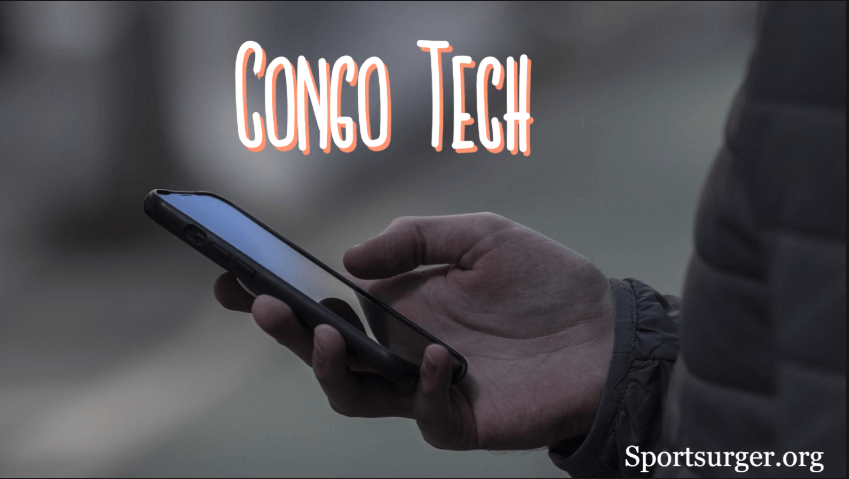Introduction
The Democratic Republic of Congo (DRC) is often celebrated for its rich natural resources — from cobalt and copper to diamonds and gold. Yet, a new kind of resource is emerging, one that is intangible but equally valuable: technology innovation.
This transformation is powered by what we can call “Congo Tech” — the wave of technological advancement, entrepreneurship, and digital adoption sweeping through the nation.
In this article, we’ll explore what Congo Tech means, the forces driving it, its current landscape, challenges, and its potential to revolutionize industries, education, governance, and everyday life. We’ll also examine real-world success stories, expert insights, and the future trajectory of technology in Congo.
Understanding Congo Tech

Congo Tech refers to the collective technology ecosystem in the Democratic Republic of Congo. It encompasses startups, government initiatives, telecom networks, fintech innovations, educational technology, and industrial automation that together form the backbone of the country’s digital economy.
While the term “Silicon Valley” often comes to mind when we think of technology hubs, Congo Tech is developing its own unique identity — one influenced by local needs, cultural context, and African ingenuity.
The Key Drivers of Congo Tech’s Growth
1. Rising Mobile and Internet Penetration
- Mobile connectivity has surged, with millions of Congolese accessing the internet for the first time via smartphones.
- Affordable smartphones and expanding 4G coverage are fueling digital inclusion.
- According to industry reports, over 40% of the population now has internet access, up from just 5% a decade ago.
2. Government and Policy Initiatives
- National digital transformation strategies are being introduced to modernize public services.
- E-governance programs aim to improve efficiency, transparency, and service delivery.
- Public-private partnerships are helping to build ICT infrastructure.
3. Private Sector and Startup Ecosystem
- Kinshasa and Lubumbashi have become emerging startup hubs, hosting innovation labs and co-working spaces.
- Tech entrepreneurs are solving real problems — from mobile banking for the unbanked to e-learning platforms for rural students.
4. Global Demand for Congolese Resources
- The DRC is the world’s leading supplier of cobalt, essential for smartphone batteries and electric vehicles.
- This has attracted global tech companies to invest in supply chain digitization and local capacity building.
Major Sectors Driving Congo Tech
1. Fintech
- Mobile money services like M-Pesa, Airtel Money, and Orange Money are empowering millions to send, receive, and save money without bank accounts.
- Local fintech startups are enabling microloans, bill payments, and international remittances.
2. E-Commerce
- Platforms like Jumia are expanding to serve Congolese consumers.
- Social media commerce through WhatsApp and Facebook is booming among small sellers.
3. EdTech
- Digital learning platforms are bridging education gaps, especially in rural areas.
- Partnerships between NGOs and tech firms provide affordable learning devices.
4. HealthTech
- Telemedicine services are emerging to connect patients with doctors remotely.
- Health data digitization is improving medical record management.
5. AgriTech
- Apps provide farmers with weather forecasts, market prices, and farming tips.
- Drone technology is being tested for crop monitoring and pest control.
Congo Tech Success Stories
Schoolap
A Congolese EdTech platform providing digital learning resources for schools, students, and teachers. During the pandemic, it became a lifeline for remote learning.
Maxicash
A fintech solution enabling international payments and remittances directly into mobile wallets, making transactions easier for the Congolese diaspora.
Ingenious City
A Kinshasa-based innovation hub supporting startups through training, funding, and mentorship.
Challenges Facing Congo Tech
1. Infrastructure Gaps
- Limited electricity supply in some regions hinders tech adoption.
- Internet speed and reliability still lag behind global averages.
2. Funding and Investment
- Many startups rely on donor funding, with limited venture capital access.
- High operational costs deter some foreign investors.
3. Skills Gap
- There’s a shortage of skilled developers, engineers, and IT professionals.
- Limited access to quality STEM education in rural areas.
4. Regulatory Barriers
- Complex licensing processes and outdated laws slow innovation.
- Digital payment regulations remain inconsistent across provinces.
Opportunities for Growth in Congo Tech
- Digital Infrastructure Expansion: Investing in broadband, data centers, and satellite internet could boost connectivity nationwide.
- Tech Talent Development: Coding bootcamps and IT certifications can close the skills gap.
- Green Technology: With abundant renewable resources, Congo can pioneer sustainable tech solutions.
- Regional Trade Integration: Leveraging the African Continental Free Trade Area (AfCFTA) to expand tech services to neighboring countries.
Expert Insights on Congo Tech
Industry leaders agree that Congo Tech’s success depends on collaboration between government, private sector, and international partners. According to tech ecosystem analysts, the DRC could become a Central African tech leader by 2030 if it sustains its current growth trajectory.
The Future of Congo Tech
The next decade could see:
- Smart cities powered by renewable energy.
- AI-driven agriculture improving food security.
- Blockchain-based systems increasing transparency in mining and governance.
- Local startups expanding to the global stage.
Table: Congo Tech at a Glance
| Sector | Key Innovations | Example Startups/Projects |
| Fintech | Mobile payments, microloans | Maxicash, Airtel Money |
| E-Commerce | Online marketplaces, social selling | Jumia |
| EdTech | E-learning platforms, digital classrooms | Schoolap |
| HealthTech | Telemedicine, e-health records | Healthlane |
| AgriTech | Farm advisory apps, drones | AgroCongo |
Actionable Insights for Entrepreneurs
- Focus on Mobile-First Solutions — With smartphones as the main internet gateway, mobile apps are key.
- Solve Local Problems — Tailor solutions for Congolese needs, from rural logistics to language localization.
- Leverage Partnerships — Collaborate with NGOs, telecoms, and government agencies.
- Build for Scalability — Design platforms that can expand across African markets.
Conclusion
Congo Tech represents more than just technological progress — it’s a movement transforming industries, empowering communities, and opening new doors for economic growth.
While challenges remain, the opportunities are immense. By investing in infrastructure, talent, and innovation, the Democratic Republic of Congo can position itself as a major tech hub in Africa.
The digital revolution in Congo is not a distant dream — it’s already happening. And those who join the journey now will be part of shaping the nation’s tech-powered future.
FAQs
Q1: What is Congo Tech?
Congo Tech refers to the emerging technology ecosystem in the Democratic Republic of Congo, including startups, government programs, and innovations in sectors like fintech, e-commerce, and health.
Q2: What challenges does Congo Tech face?
Key challenges include limited infrastructure, a shortage of skilled tech workers, regulatory barriers, and funding gaps.
Q3: Which sectors are leading Congo Tech’s growth?
Fintech, e-commerce, edtech, healthtech, and agritech are currently driving the most innovation.
Q4: How can entrepreneurs benefit from Congo Tech?
By focusing on mobile-first, locally relevant solutions, forming partnerships, and leveraging regional trade opportunities.
Q5: What is the future outlook for Congo Tech?
With continued investment and innovation, Congo Tech could position the DRC as a major African technology hub by 2030.

